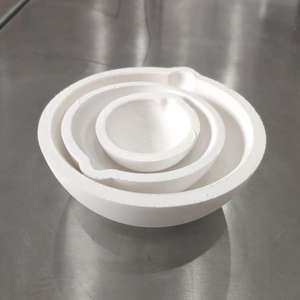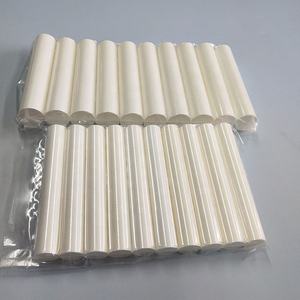Discover Premium Ceramic Products | Durability & Elegance United | Advanced Ceramics
PRODUCT PARAMETERS
Description
Introduction to Alumina Ceramics
Alumina ceramics are known for their high hardness, wear resistance, corrosion resistance, good electrical insulation and high temperature stability. According to the different alumina content, it can be divided into different grades, such as 95 porcelain, 99 porcelain, etc., among which 99 porcelain refers to ceramic materials with an alumina content of 99%. As the alumina content increases, its mechanical strength and electrical insulation properties will also increase accordingly.
Characteristics of Alumina Ceramics
High Hardness: Alumina ceramics have extremely high hardness, which makes it very wear-resistant and suitable for manufacturing abrasive tools and parts that require wear resistance.
Wear resistance: Due to its high hardness, alumina ceramics show excellent wear resistance and are suitable for manufacturing parts for long-term use.
Corrosion resistance: Alumina ceramics have good resistance to most acids and alkalis, making them widely used in the chemical industry.
Good electrical insulation: As an excellent electrical insulating material, alumina ceramics are widely used in electronic and electrical products.
High temperature stability: Ability to withstand extremely high temperatures without significant physical or chemical changes, which makes it an ideal choice for applications in high temperature environments.
Biocompatibility: In the medical field, certain grades of alumina ceramics are used to make medical devices such as artificial joints due to their good biocompatibility.
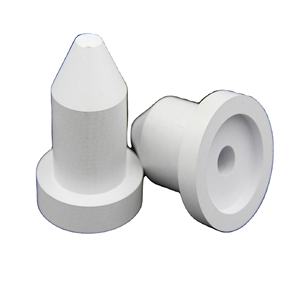
(High Purity Al2O3 Alumina Ceramic Plate)
Specifications of High Purity Al2O3 Alumina Ceramic Plate
High pureness Al2O3 alumina ceramic plates use extraordinary efficiency for industrial and technical applications. These plates include over 99% aluminum oxide. This makes sure strong chemical security and heat resistance. The material stands up to severe temperatures up to 1800 ° C. It keeps architectural honesty without warping or breaking. The ceramic plates reveal high mechanical toughness. Their flexural strength surpasses 300 MPa. This makes them optimal for heavy-load atmospheres. The hardness degree is around 9 on the Mohs range. They resist wear and abrasion successfully.
The thickness varies in between 3.8 and 3.9 g/cm TWO. This contributes to their resilience and resistance to influence. The surface finish is smooth and accurate. It can be polished to a roughness below 0.2 µm. This reduces rubbing in precision applications. Home plates supply outstanding electric insulation. Their dielectric strength gets to 15 kV/mm. This fits them for digital and electrical systems. Thermal conductivity is moderate at 30 W/m · K. It permits effective warm dissipation without compromising insulation.
Rust resistance is a key attribute. The plates resist acids, alkalis, and molten metals. They carry out dependably in extreme chemical atmospheres. Dimensional stability is maintained across temperature changes. The thermal growth coefficient is reduced at 7.2 × 10 ⁻⁶/ ° C. This avoids bending during quick home heating or cooling. Custom shapes and sizes are available. Thickness options array from 0.5 mm to 50 mm. Diameters or lengths can be tailored to certain needs.
Applications consist of semiconductor manufacturing, furnace linings, laser systems, and medical tools. The material satisfies stringent sanitation criteria. It creates minimal particle contamination. Machining options like drilling, grinding, and laser cutting are sustained. Surface area therapies such as metallization or finish improve capability. These plates adhere to commercial accreditations for top quality and safety. They are tested carefully for performance uniformity. Customized requirements can be adjusted based on job requirements.
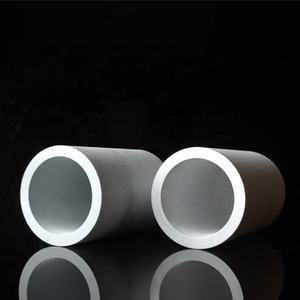
(High Purity Al2O3 Alumina Ceramic Plate)
Applications of High Purity Al2O3 Alumina Ceramic Plate
High pureness Al2O3 alumina ceramic plates are commonly made use of in industries requiring extreme resilience and dependability. Their unique homes make them ideal for requiring applications. These plates take care of high warm, resist chemical rust, and maintain strength under stress.
In electronics, alumina ceramic plates work as insulating substrates for circuits. They protect against electric leak while handling warm from elements like power transistors. Semiconductor producing relies on them for wafer-processing tools. Their security guarantees very little contamination during high-temperature processes.
Industrial machinery utilizes these plates for wear-resistant components. They line pumps, valves, and seals in abrasive or destructive settings. Mining equipment gain from their ability to endure grinding and influence. Alumina plates prolong the lifespan of equipment by lowering friction and wear.
Medical devices use high-purity alumina for implants and surgical devices. The material is biocompatible, suggesting it doesn’t respond with body cells. Dental implants and joint replacements make use of its strength and smooth surface area. Medical instruments stay sterilized much longer due to the ceramic’s non-porous nature.
The aerospace industry uses alumina plates in sensors and engine elements. They endure extreme temperatures in jet engines without breaking down. Thermal insulation layers in spacecraft usage alumina ceramics to protect delicate electronics during re-entry.
Energy applications include usage in battery systems and gas cells. Alumina layers separate electrodes while allowing ion transfer. Photovoltaic panel production utilizes them as crucibles for melting silicon. Their heat resistance ensures consistent performance in high-energy processes.
Laboratories use alumina ceramic plates for high-temperature experiments. Crucibles and labware made from this material withstand chain reactions. Precision measurement tools rely on their dimensional security under differing conditions.
High-purity alumina porcelains are necessary in optics for laser elements. Their openness to infrared light makes them ideal for laser tubes and sensing units. The product’s firmness allows accurate brightening for lenses and mirrors.
Automotive systems integrate alumina plates in sensors and ignition parts. They make it through extreme engine conditions while providing electric insulation. Electric automobiles utilize these ceramics in battery components to enhance safety and efficiency.
Company Introduction
Advanced Ceramics founded on October 17, 2014, is a high-tech enterprise committed to the research and development, production, processing, sales and technical services of ceramic relative materials and products.. Since its establishment in 2014, the company has been committed to providing customers with the best products and services, and has become a leader in the industry through continuous technological innovation and strict quality management.
Our products includes but not limited to Silicon carbide ceramic products, Boron Carbide Ceramic Products, Boron Nitride Ceramic Products, Silicon Carbide Ceramic Products, Silicon Nitride Ceramic Products, Zirconium Dioxide Ceramic Products, Quartz Products, etc. Please feel free to contact us.(nanotrun@yahoo.com)

Payment Methods
T/T, Western Union, Paypal, Credit Card etc.
Shipment Methods
By air, by sea, by express, as customers request.

5 FAQs of High Purity Al2O3 Alumina Ceramic Plate
High Purity Al2O3 Alumina Ceramic Plate FAQs
What is High Purity Al2O3 Alumina Ceramic Plate?
This plate is made from aluminum oxide (Al2O3) with purity over 99%. It is a ceramic material known for high hardness, wear resistance, and thermal stability. The manufacturing process involves sintering alumina powder at high temperatures. The result is a dense, durable plate used in extreme conditions.
Where is this ceramic plate commonly used?
It is used in industries requiring heat resistance and electrical insulation. Examples include semiconductor manufacturing, furnace linings, laser systems, and medical equipment. It also serves as a base for electronic components due to its non-conductive properties.
Can it withstand high temperatures?
Yes. The plate handles temperatures up to 1700°C in continuous use. Short-term exposure to higher temperatures is possible. Its low thermal expansion reduces cracking risks under heat stress. This makes it suitable for applications involving rapid temperature changes.
How does it compare to other ceramic materials?
Alumina ceramic outperforms many materials in hardness and corrosion resistance. It is stronger than zirconia in high-temperature environments. Unlike metals, it does not oxidize or conduct electricity. Compared to plastics, it resists wear and chemical damage better.
How should the plate be cleaned and maintained?
Clean it with mild detergents or alcohol. Avoid abrasive scrubbers to prevent surface scratches. For stubborn stains, ultrasonic cleaning is safe. Store it in a dry environment to avoid moisture absorption. Regular inspection for cracks or chips ensures long-term performance.
The plate’s properties make it a reliable choice for demanding applications. Users prioritize its durability and stability in harsh conditions. Proper care extends its service life significantly.
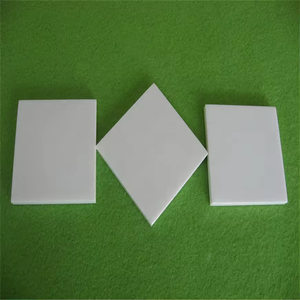
(High Purity Al2O3 Alumina Ceramic Plate)
REQUEST A QUOTE
RELATED PRODUCTS
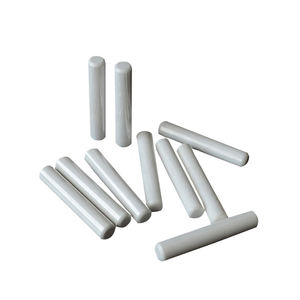
Factory High Hardness Alumina Ceramic Parts Aluminum Oxide Chemical Stability Ceramic Shaft
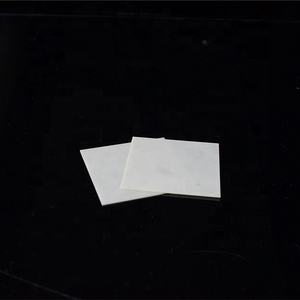
Alumina Ceramic Column/alumina Wear-resistant Ceramic/special Industrial Ceramic
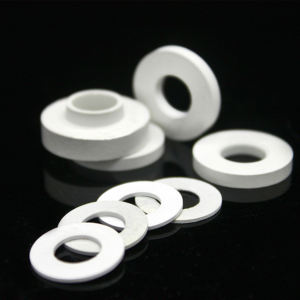
Aluminium Oxide Al2O3 Alumina Ceramic Locking Ring
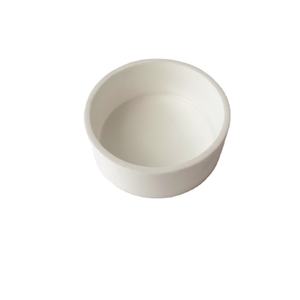
High-quality 99.7% Al2o3 Alumina Ceramic Products
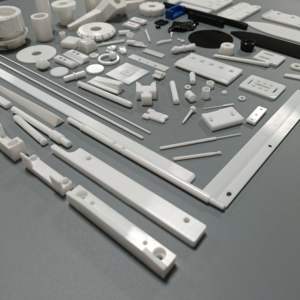
Al2O3 Alumina Aluminum Oxide Ceramic Stirring Rod
